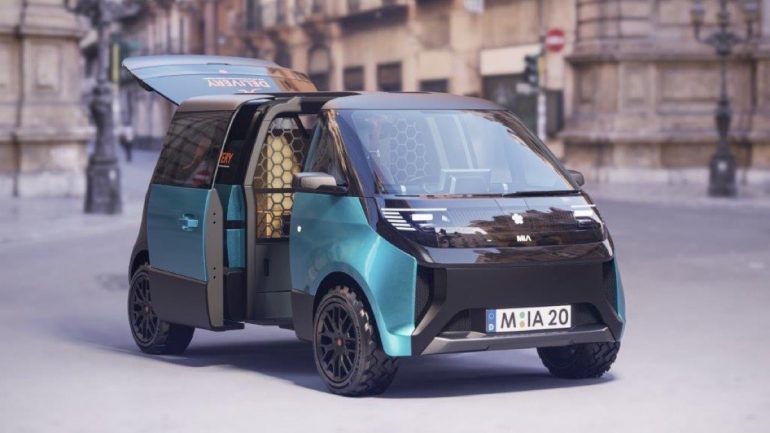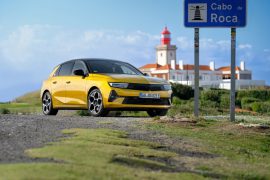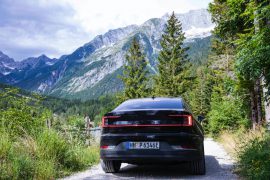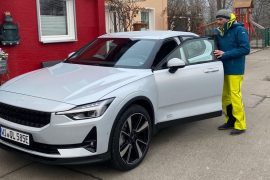In two years, according to the Munich-based company fox e-mobility, the time will come for the electric microvan Mia to experience its rebirth. With the approval of the interior and exterior design, a significant step has been taken towards the start of production and the market launch of the purely European brand MIA. The first real test vehicles will probably be on the road this year, and the compact electric vehicle is expected to be available for purchase in 2024.
According to its own statement, fox e-mobility AG is the only independent European e-car company that specialises in the development, production and marketing of compact electric cars in the lower price segment for logistics companies and private customers.
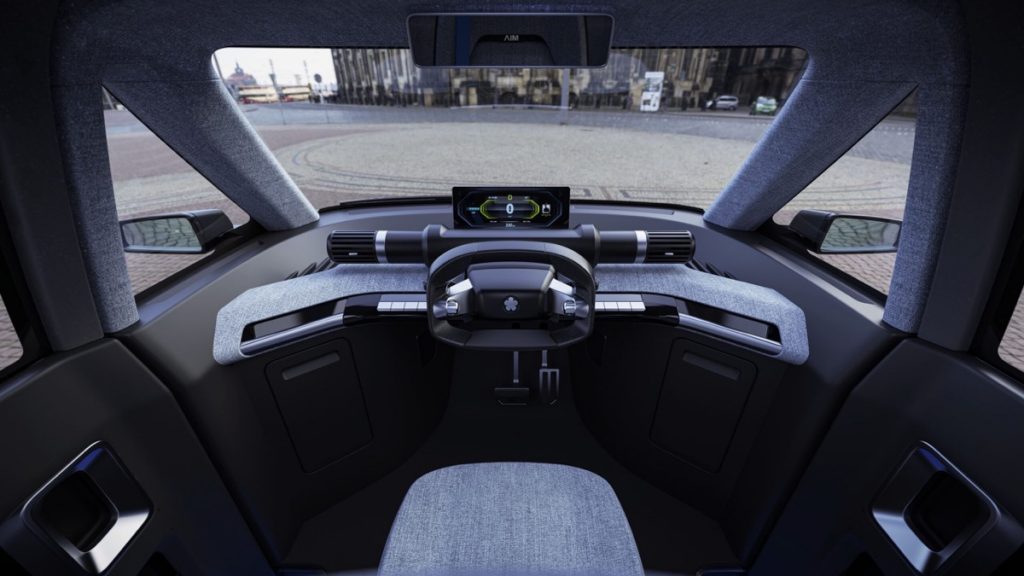
Challenges for eMobility Start-Ups
Developing and building an electric vehicle is no easy undertaking, especially when it is expensive. This is especially true for smaller start-ups, which sometimes manage to present their concept cars and prototypes at trade fairs and glamorous events, but ultimately fail to put a series vehicle on the road. And if they do, it is so late that their vehicle is in danger of no longer representing the state of the art. Added to this is the overwhelming competition from the big car manufacturers, the costly acquisition of additional investors and the difficult search for the right contract manufacturer. One example of this is the company Sono Motors, which originally wanted to launch its e-model “Sion” in 2019. Now the developers are aiming to have the compact car equipped with solar cells go into series production next year – with a four-year delay.
In contrast to this and other eMobility start-ups, the “foxes” have the advantage of having already tested the basic vehicle concept in series production, even if this first attempt was made some time ago and was not successful on balance.
A concept with history
The project actually looks back on a chequered history. Drawn by the well-known car designer Murat Günak, who had already designed various models for Volkswagen, Mercedes and Peugeot, the original version of the MIA, developed under the prototype name “Heuliez Friendly”, with its 33 hp drive, was finally manufactured by the French company Heuliez from 2012. Despite the special expertise of this company as a contract developer and producer of (e-)models for Citroën, Peugeot or Renault, for example, the first MIA had to struggle with quality problems, especially with the batteries. Ultimately, the original MIA was too far ahead of its time, irrespective of certain teething troubles, and so the first era of this smart and innovative dwarf electric car came to an end in 2014 with the insolvency of the manufacturer after only a few years and around 1600 vehicles delivered.
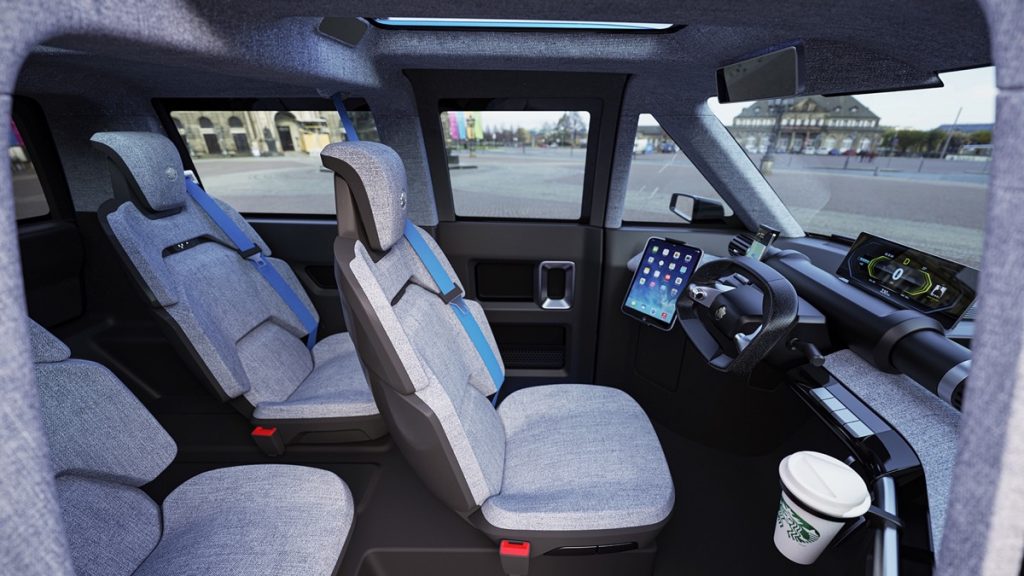
New start with a chance of success
Because of this first period, it is now an advantage for the new development that much has already been fundamentally laid out. The MIA 2.0 therefore only needs about half the time and financial effort to bring the new car to the start as a state-of-the-art competitive e-car.
After a redesign, for which Murat Günak is again responsible, the MIA, named after his daughter, is now being developed further in the direction of series production. A sales price of well under 20,000 euros is the target – and that is before any possible subsidy measures. Experience shows that such price announcements should be treated with caution in the early stages, but even slightly higher prices are unlikely to diminish the appeal of the small car. Provided the quality is right.
Especially in the cargo version, the MIA should have good market chances. The vehicle has a length of 3.2 metres, weighs less than 1000 kg, offers a load volume of 1500 litres and is large enough to accommodate a Euro pallet. The two sliding doors – a particular benefit of the concept – allow quick and space-saving entry and exit.
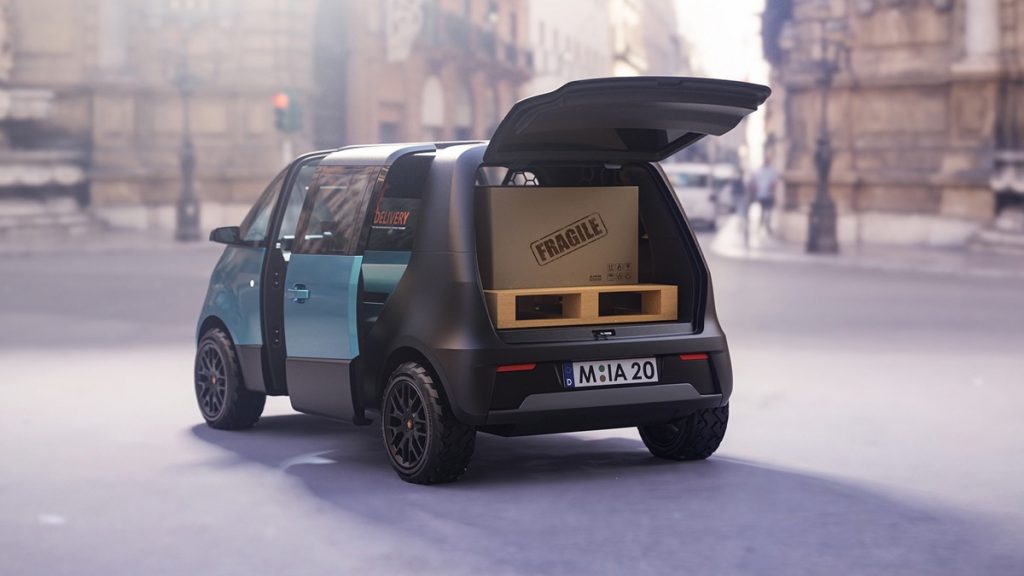
Various product variants, second battery as an option
The platform of the Mia 2.0 includes not only the drive and battery technology, but also the complete control electronics, also for later automated driving. It is the technical basis for different planned body variants of the product family.
The high degree of flexibility even allows different track widths and wheelbases, depending on the model and the customer’s wishes. Shorter or longer models for three or four passengers are planned, for example.
The MIA is not offered with different battery sizes, but an optional second 20 KWh battery can double the range from over 200 to over 400 km. In addition to the standard version with electric rear axle, there is also the option of installing a second motor with an output of 30 kW (45 hp) on the front axle, which turns the Mia into an all-wheel drive vehicle.
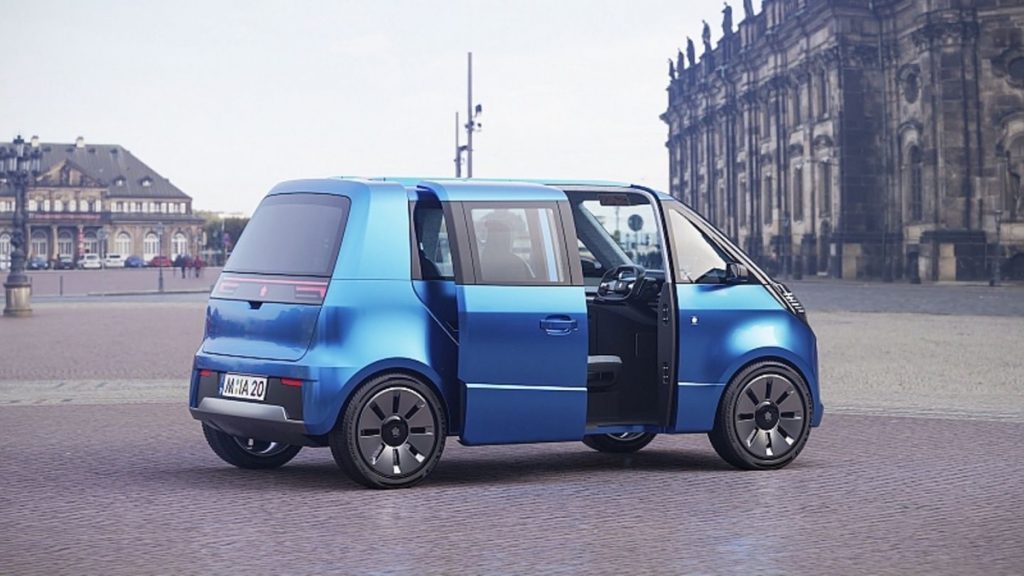
Conclusion
Without fundamentally changing the smart concept of the original MIA, fox e-mobility has succeeded in designing a modern electric microvan with compact exterior dimensions, maximum space and great flexibility. It could appeal to private and commercial customers alike, with the target market of delivery and care services likely to be particularly interesting. Let’s hope that “the MIA brand will continue on its path to the start of production in a consistent and reliable manner”, as CEO Philippe Perret optimistically proclaims.
Text: Peter Grett
Pictures: fox e-mobility
Link

